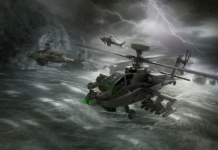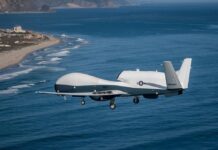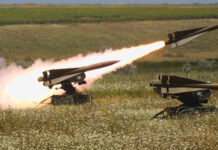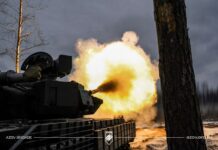The ongoing war in Ukraine underscores just how hotly contested the airspace over the tactical edge will be in future conflicts.
There are no firm definitions for very short-range air defence (VSHORAD) or short-range air defence (SHORAD), though a 2019 official UK publication entitled ‘Joint Air Defence’ provides some useful thresholds. The document states that SHORAD systems typically engage targets at below 18.5 km range, while VSHORAD systems engage targets at under 5.6 km range. Informally, however, a common practice among air defence analysts and industry is to take the convention of describing effectors with a maximum engagement range of ≤10 km as VSHORAD, and effectors with a range of >10 km to 20 km (sometimes even going up to 25 km) as SHORAD.
VSHORAD effectors typically include surface-to-air missiles (SAMs), including the man-portable air defence system (MANPADS) sub-category, and cannon or gun-based anti-aircraft artillery (AAA). SHORAD systems by contrast only use SAMs as their effectors. Looking ahead, directed energy weapons (DEWs) such as lasers may supplement the typical effector mix in the VSHORAD range band, and possibly in the SHORAD range band further down the line. A US Congressional Research Service report published in June 2023 entitled the ‘US Army’s Manoeuvre Short-Range Air Defence System’ highlighted the force’s search for a 50 kW laser to this end.
The combined (V)SHORAD bands are inherently tactical. Assets such as SAMs and AAA, and their associated sensors, are typically deployed to protect point targets. A battalion or brigade headquarters, would be two examples of a point target, as might a tactically important bridgehead. Given (V)SHORAD’s tactical nature, it will also provide an umbrella of coverage above units at the tactical edge. Doctrinally, it is vital that (V)SHORAD assets are mobile as they must be able to move as land forces manoeuvre, continuing to provide protection from aerial threats. Assets need to be capable of engaging or sensing when mobile as the air picture will be continuously changing when tactical units are moving and engaging.
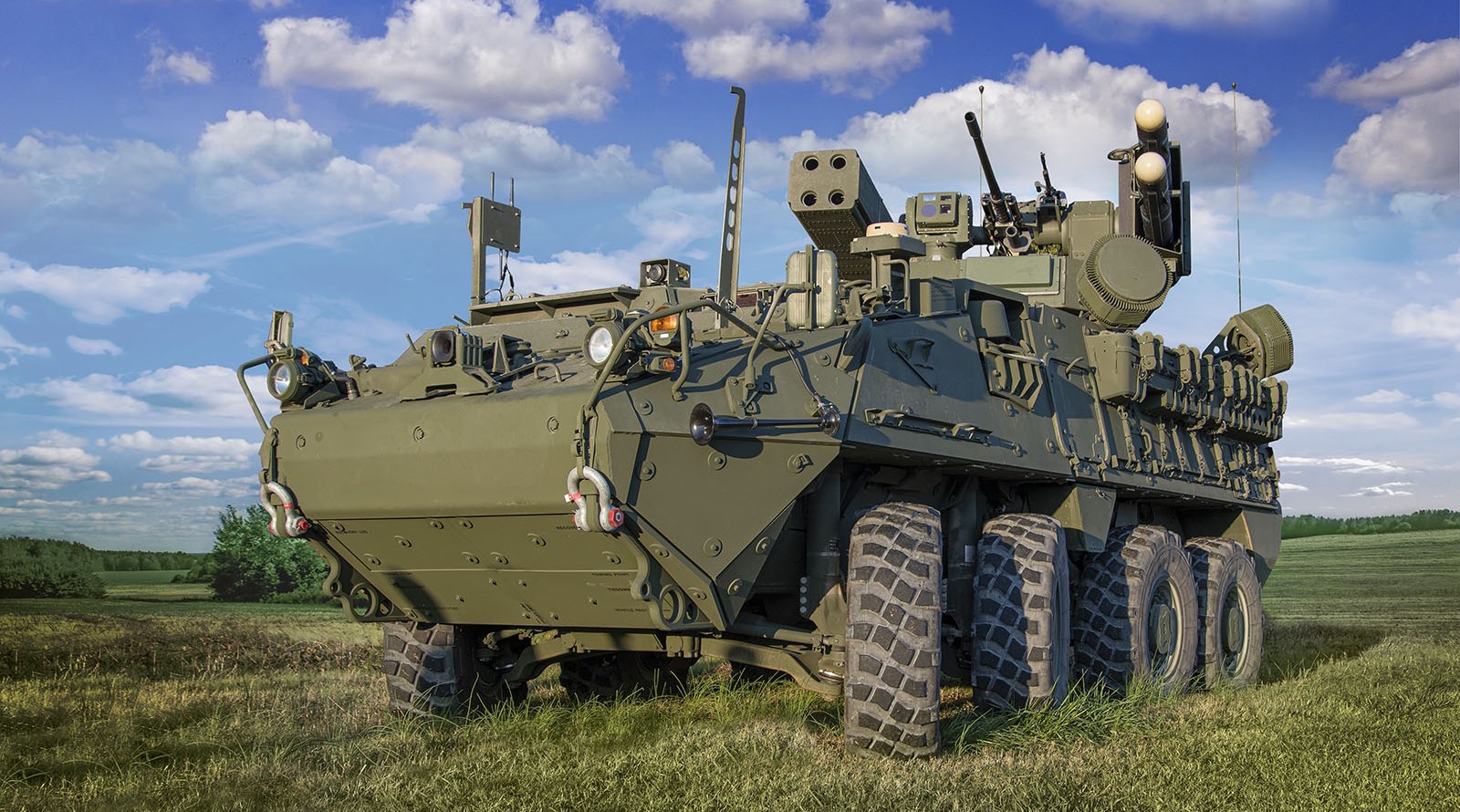
Credit: DRS RADA Technologies
(V)SHORAD Command and Control (C2) systems must take account of this, as must the communications networking short-range air defence assets. However, it may prove impractical to provide wired links between SHORAD assets at the tactical edge. Instead, tactical radio links will need to be survivable in the face of determined hostile electronic jamming. Furthermore, the links must be capacious enough to carry data pertaining to the potentially dense air picture. Data are likely to include visual imagery, the recognised air picture (RAP), including tracks, plots and Identification Friend-or-Foe (IFF) information. This traffic will be accompanied by voice, cartographic and text-based information.
Complicating matters further is the plethora of aerial threats the manoeuvre forces must contend with. Broadly speaking, these threats include unmanned aerial vehicles (UAVs) and manned fixed- and rotary-wing aircraft. UAVs and conventional aircraft are joined by surface-to-surface and air-to-surface missiles (SSM/ASM) and air-launched ordnance. Countering rockets and artillery tends to be the mission of specialist dedicated counter-rocket, artillery, and mortar (C-RAM) assets and is not routinely folded into the VSHORAD mission, since many VSHORAD systems are not capable of undertaking the C-RAM mission effectively. Dedicated C-RAM systems, however, are typically capable of serving as effective VSHORAD.
Sensors
SHORAD forces will typically use optronics and radar to detect, identify, track and help engage aerial threats. Passive radio frequency (RF) capabilities also increasingly have a role to play. Passive RF systems, such as direction-finders, will seek to detect and track an aircraft by using only the latter’s emitted radio signals. Manned aircraft employ an array of electromagnetically dependent systems while radios, radars and identification friend or foe systems all transmit RF signals. Electronic support measures (ESM) can listen in to detect these transmissions. By using two or more antennas, an ESM can triangulate an aerial target via the latter’s transmissions.
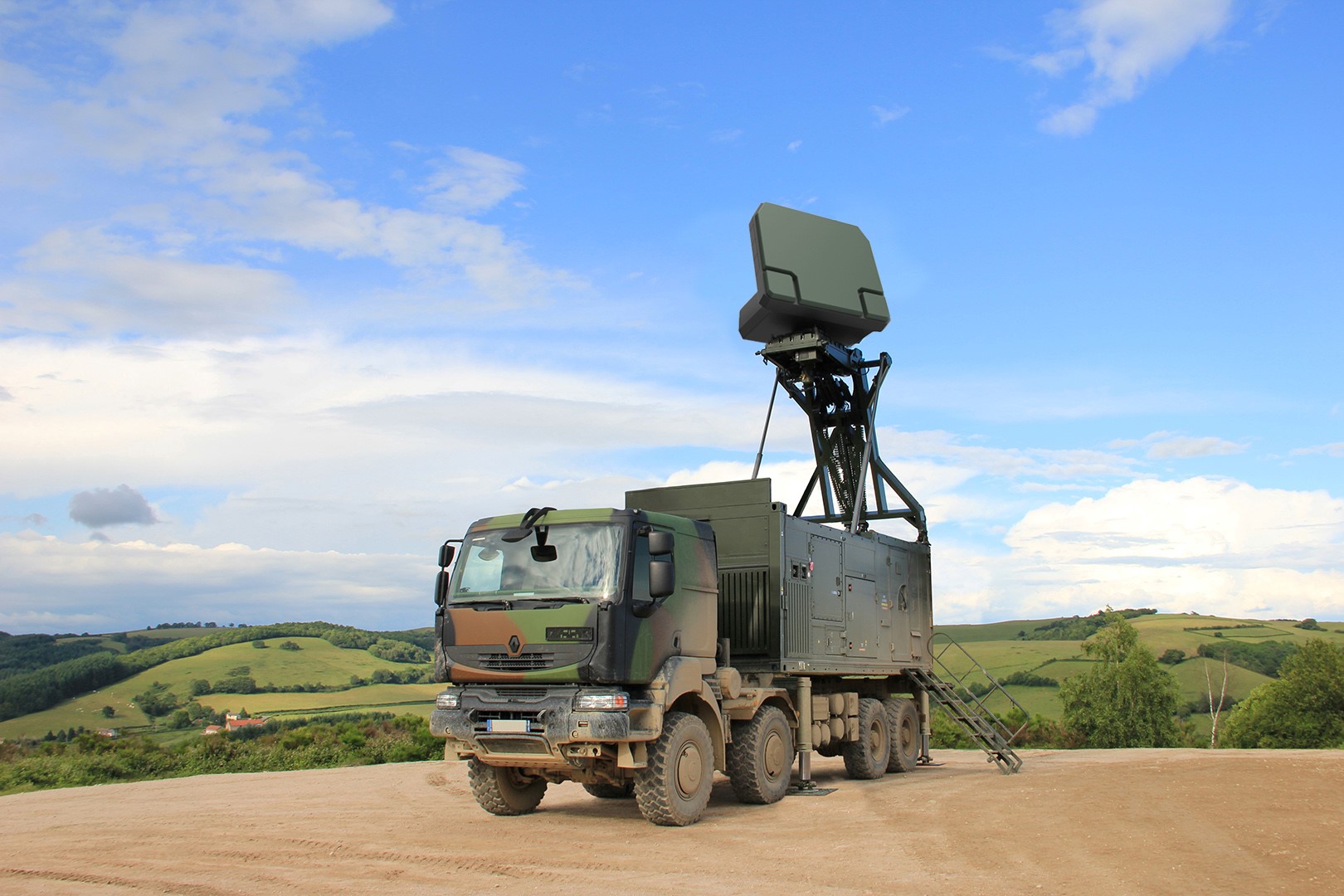
Credit: Thales
An ESM’s internal library of radio signal ‘fingerprints’ may even be able to match the signal with the type of aircraft. For example, determining that a radar signal is from a Thales RDY-3 X-band (8.5 GHz to 10.68 GHz) fire control radar suggests that the aircraft is a Dassault Mirage-2000 series combat aircraft. ESMs are also particularly useful in detecting UAVs. The latter must maintain an RF link between the aircraft and the pilot for C2. C2 RF links use a variety of frequencies spread across a waveband of 27 MHz to 5.8 GHz. These wavebands are reserved by the United Nations’ International Telecommunications Union (ITU) for UAV command and control. The ITU is tasked with regulating global use of the radio spectrum.
Networking (V)SHORAD brings its own challenges. A general rule of thumb in telecommunications is that 1 bit of data absorbs 1 Hz of bandwidth. The denser the information being moved around a network, the more bandwidth is taken up. Data absorption is a key concern if dense radar pictures or visual imagery and video are being shared. At the tactical edge, this will be further complicated by aggressive adversary electronic attack. Jamming engages the radio links that SHORAD C2 networks rely upon. Digital battle management systems used for air battle C2 will also most likely be under cyberattack.
Design philosophies
The demands of the tactical edge require (V)SHORAD radars to be light enough to mount on vehicles to support the manoeuvre force. Radar performance must be such that the system detects, identifies and tracks the panoply of targets the manoeuvre force expects to encounter. Radar signals must also exhibit low probability of detection/interception (LPI/D) characteristics. Moreover, economy of data sharing is a must. As the above discussion has illustrated, the airspace over the tactical edge is a highly dynamic environment. For (V)SHORAD to be as effective as possible, air defenders need a detailed tactical picture. However, this creates challenges. Red force electronic warfare (EW) will be doing its level best to jam SHORAD communications networks and attack SHORAD C2 systems. Jamming could reduce radio bandwidths available for sharing radar and other tactical data.

Credit: Hensoldt
(V)SHORAD radar performance demands create challenges for radar engineers which can be illustrated by taking a hypothetical (V)SHORAD radar and demonstrating its effective range against targets of various sizes. For the purposes of this demonstration, the radar transmits on a frequency of 566 MHz (UHF band) with a signal strength of 7 kW (68.5 decibels-per-milliwatt) with the radar’s antenna providing 28.5 decibels-relative to isotropic gain. An isotropic antenna is one that theoretically transmits the same power in all directions at once. However, radars are designed to focus a specific amount of power in a specific direction. Gain is a measurement of how much signal strength the antenna can focus in a specific direction.
The challenge for a (V)SHORAD radar is that it must detect and track an array of very different targets at suitable ranges to give short-range air defence units at the tactical edge sufficient time to engage them. A Sukhoi Su-27 (NATO reporting name: Flanker) may have a radar cross section (RCS) of between 10 and 15 m2 (translating to: 10 to 11.75 dB). Conversely, an incoming 227 mm rocket may have an RCS as small as 0.018 m2 (translating to: -17.45 dB). Taking the Su-27 as a first example, the theoretical SHORAD radar could detect this at a range of 106 km for a 10 m2 RCS target. Detection ranges are slightly greater, 117 km, if the Su-27 has a 15 m2 RCS. Nonetheless, these ranges start to reduce considerably as targets get smaller. A rocket with a 0.018 m2 RCS could be detected at 22 km, while a small UAV with a 0.001 m2 RCS could be detected at a mere 11 km.
The 7 m diameter antenna of our hypothetical radar makes it impractical to move around the battlefield to support (V)SHORAD at the tactical edge. Moreover, the comparatively low frequency of 566 MHz may not depict targets in the rich, precise detail that AAA and SAM units need for weapons-quality tracks. Leaving the other parameters as they are, but reducing the antenna size to have a surface area of 2 m2 reduces detection ranges. A target with a 10 m2 RCS is now detected at 38 km, or 42 km for an aircraft with a 15 m2 RCS. When detecting a rocket, range reduces to 7 km and to 4 km for a small UAV. Reduced detection ranges mean reduced early warning times for the (V)SHORAD effectors, severely hampering their reaction times. Increasing the radar’s transmission frequency also helps improve range. Retaining the 2 m2 antenna, but raising the frequency to 2 GHz (S-Band) increases detection ranges. A target with a 10 m2 RCS is now detectable at 20 km. This detection range increases to 22 km for an aircraft with a 15 m2 RCS. Radar performance against other targets, however, reduces. Detection ranges for 0.018 m2 RCS rockets and UAVs with a 0.001 m2 RCS diminish to around 4 km and 2 km respectively.

Credit: Lockheed Martin
One solution is to move (V)SHORAD radar frequencies further up the radio spectrum; let us assume the hypothetical antenna size is reduced to 1 m2 but transmission frequency is increased to 33.4 GHz (Ka-Band), and the other radar parameters are maintained, notably the 120 W transmitting power. It should therefore be possible to detect a target with a 0.018 m2 RCS at 15 km. A UAV with a 0.001 m2 RCS will be detectable at 7 km, while larger targets such as aircraft with 10 m2 and 15 m2 RCSs will be detectable at ranges of almost 73 km and 82 km respectively.
Evolutions
Mark Radford, founder and chief technology officer of Blighter Surveillance Systems, says that this embrace of higher frequencies shows the direction of travel for SHORAD radar evolution: “Given the greater diversity of threat types compared to Cold War days, such as nano-drones and guided ordnance, the modern radar systems will benefit from adoption of higher operating frequencies such as X-band (8.5 GHz to 10.68 GHz) and Ku-Band (13.4 GHz to 14 GHz/15.7 GHz to 17.7 GHz).”
Using these, and other comparatively higher frequencies, will have the added effect of helping to reduce the physical size of SHORAD radars: Radford adds that, “This shift to higher frequencies, and hence shorter wavelengths also allows the radars to be more compact, which in turn provides the opportunity for on-the-move operation.” Radford emphasises that while (most) SHORAD effectors may not be able to engage targets when mobile, “a radar system designed to operate while being driven at speed can provide some level of protection while moving and is instantly available for full SHORAD capability the moment the vehicle stops”. Moreover, there is no need for a SHORAD radar to use a traditional, rotating antenna. Instead, flat panels could be mounted on the side of a vehicle with each providing 90° of air surveillance. Together, these panels would give the radar 360° coverage of the airspace in its locale. Several vehicles equipped to this end could provide overlapping coverage at the tactical edge. Removing the need to have a rotating antenna on top of a vehicle would also help to reduce its visual signature, improving survivability.
Moving into higher radar frequencies and embracing non-rotating antennas are two important aspects towards improving (V)SHORAD radar surveillance, but other factors are equally important. First and foremost, radars are detectable thanks to their RF emissions. LPI/D techniques can reduce hostile opportunities to detect and attack a radar either electronically or kinetically but cannot eliminate the risk: “Possibly the greatest and growing challenge is that active radars can be readily detected by both remote ground-based and compact airborne electronic-surveillance equipment, resulting in rapid reactive targeting by the enemy,” noted Radford, adding that, “This has been observed in Ukraine and is resulting in an evolution of alternative threat detection techniques.”
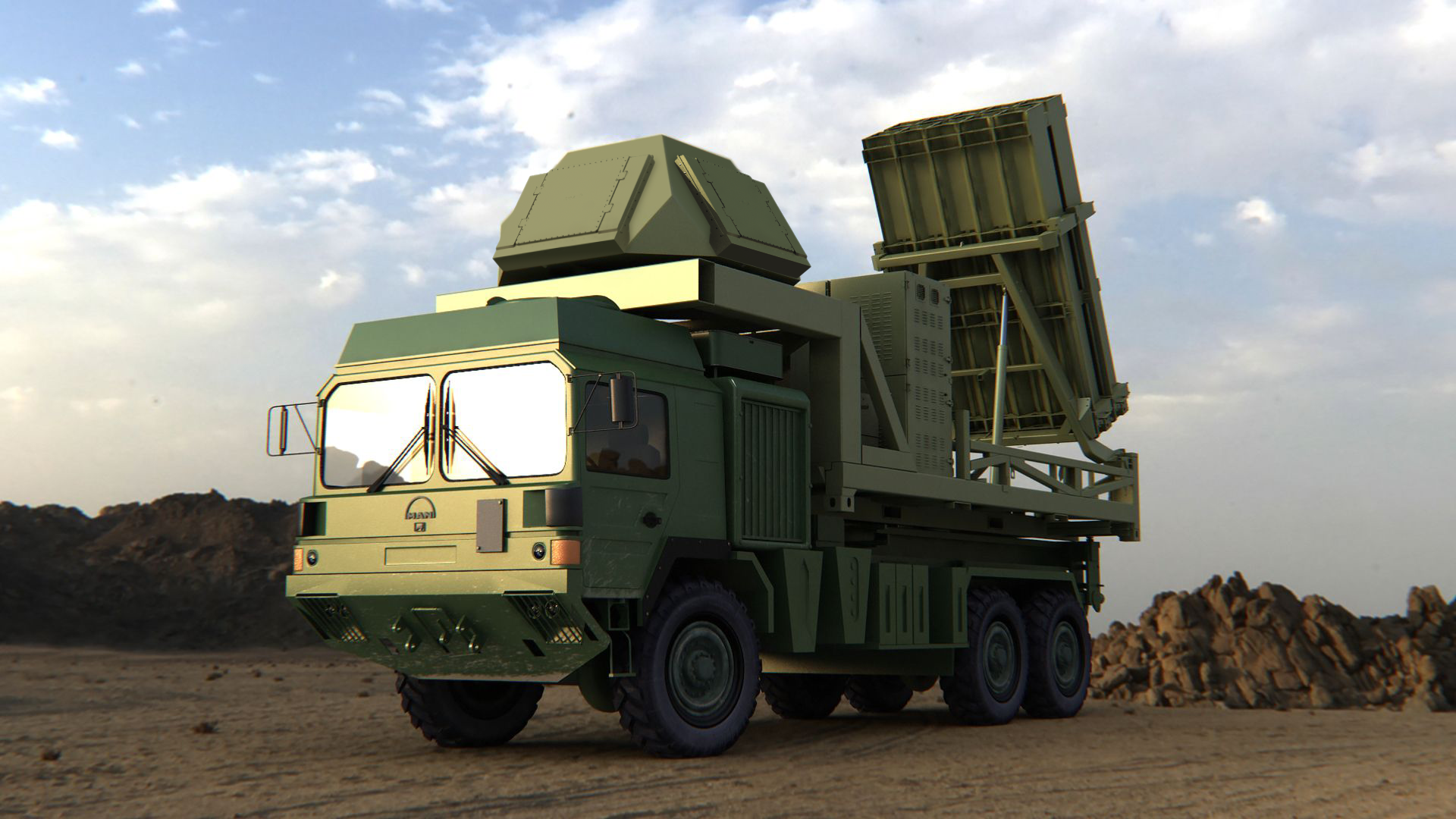
Credit: DRS Rada Technologies
Passive radar – one SHORAD technology garnering interest – watches for disturbances to the prevailing radio spectrum in the locale caused by an airborne object within range. We are continually surrounded by electromagnetic energy, particularly in urban areas, with broadcasting and cell phone signals being two of the most ubiquitous sources of this energy. Other passive radars work to detect radar and radio signals from airborne targets. In both cases, these signals and signal disturbances are used to detect, locate and track a target. Passive radar’s key asset is that it does not emit any electromagnetic energy.
Radford believes that passive radar is not “sufficiently mature for tactical use yet” but is showing promise as an alternative to conventional SHORAD radars. Realistically, land forces are unlikely to benefit from uncontested airspace over their manoeuvre areas in future wars. Air threats will arrive in all shapes and sizes, collecting intelligence, surveillance and reconnaissance information and delivering ordnance. The advent of drone warfare, so graphically illustrated in Ukraine, shows that the danger of UAVs will only increase. (V)SHORAD radar design will need to continue evolving to be survivable and to work with a host of traditional and emerging threats. Meanwhile, air defenders will need to think about how technologies such as passive radar could contribute to their efforts to protect the manoeuvre force.
Thomas Withington







